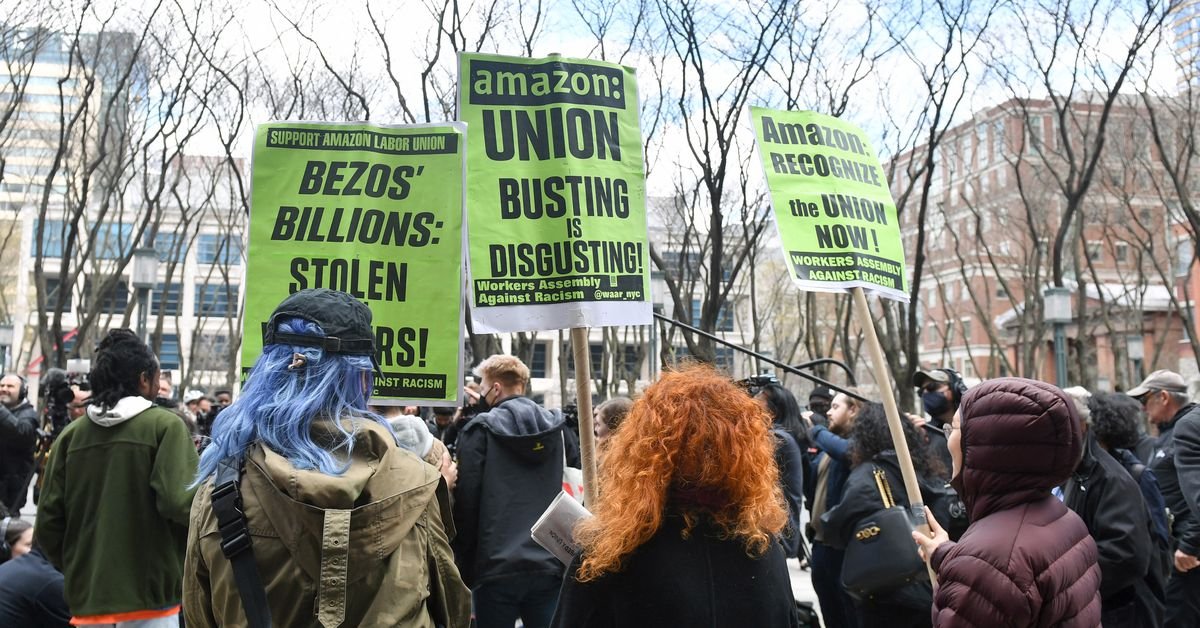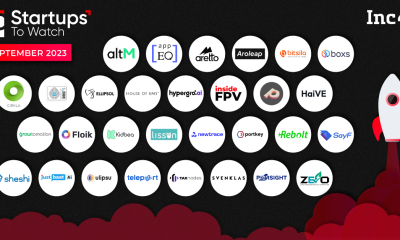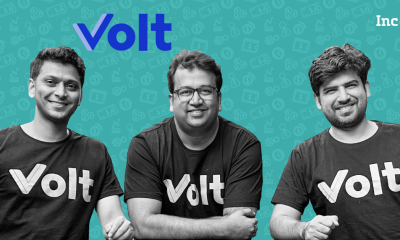Some of the biggest names in tech are joining forces to try something that many before them have failed to do: use trees to cancel out their greenhouse gas emissions. Google, Meta, Microsoft, and Salesforce are creating the Symbiosis Coalition as an effort to support “nature-based” projects aimed at taking carbon dioxide out of the atmosphere.
Science
Big Tech thinks it can plant trees better than everyone else

It’s a tactic companies have used for decades to try to offset their greenhouse gas emissions by planting trees, which take in and store carbon dioxide through photosynthesis. The hope is that paying to restore forests will amplify that process, ostensibly counteracting companies’ carbon footprint. It sounds simple enough on paper. However, a growing body of evidence has shown that this strategy fails time after time.
A growing body of evidence has shown that this strategy fails time after time
The Symbiosis Coalition seems to think it can turn things around. Together, the companies have committed to purchasing credits from “high-impact, science-based restoration projects” representing up to 20 million tons of captured carbon dioxide by 2030. They say they’ll vet projects for quality control, aiming to drum up demand for carbon credits that have earned a bad rap because so many carbon offset initiatives have fallen flat in the past.
In one recent example, a study of 26 carbon offset projects across six countries published in the journal Science last year found that few of them succeeded in stopping deforestation. Whatever climate benefits the projects were purported to have were overblown by as much as 300 percent. A separate investigation into one of the world’s leading carbon registries found that 90 percent of its rainforest offsets turned out to be “phantom credits” that likely didn’t represent real-world reductions in greenhouse gas emissions. And a 2022 report by nonprofit watchdog Carbon Market Watch determined that carbon offset credits offered by major European airlines were similarly linked to faulty forestry projects.
A big part of the problem is that it’s difficult to measure just how much carbon dioxide a tree or forest has absorbed, which has led to projects exaggerating how much good they do for the climate. Planting trees is also a tricky endeavor — if they don’t live for hundreds of years, they just wind up releasing all the carbon they’ve stored. Planting the wrong trees in the wrong place, creating tree farms instead of forests, can also harm the local environment. In 2020, Salesforce CEO Marc Benioff backed a World Economic Forum plan to plant a trillion trees — although the research undergirding the effort was quickly criticized by dozens of scientists for grossly overestimating the potential environmental benefits.
Salesforce, Google, Meta, and Microsoft are confident they can keep history from repeating itself
Nevertheless, Salesforce, Google, Meta, and Microsoft are confident they can keep history from repeating itself. To try to accomplish that, they worked alongside independent experts to establish strict criteria for forestry projects. Symbiosis also says in a press release that it’ll “involve and compensate Indigenous Peoples and local communities” to work toward “equitable outcomes.” And while it’s starting with forestry projects, Symbiosis says that, over time, it’ll incorporate other strategies, like sequestering carbon dioxide in soil.
“Nature-based projects are complex and challenging to get right and haven’t always lived up to their intended impact,” Symbiosis executive director Julia Strong said in an email to The Verge. “Symbiosis aims to address challenges around nature-based project integrity to date by setting a high-quality bar that builds on best in class market standards and the latest science, data, and best practice.”
The coalition is modeled after a similar initiative called Frontier launched by Stripe, Alphabet, Meta, Shopify, and McKinsey in 2022. Frontier is focused on supporting new technologies to take carbon dioxide out of the atmosphere. Frontier has contracted more than 510,000 tons of carbon removal — but delivered just around 1,700 tons of captured carbon so far.
Both Symbiosis and Frontier are aimed at facilitating deals between carbon removal projects and companies that want to pay for their services. Eventually, Symbiosis hopes more companies beyond its founders will hop on board.
For perspective, all of these efforts still add up to a small fraction of the emissions these companies produce. The 20 million metric tons of nature-based carbon dioxide removal that Symbiosis committed to is just slightly more than the 15.4 million metric tons of carbon dioxide Microsoft alone produced in its last fiscal year.
To be sure, safeguarding the world’s forests does a lot of good for the planet. But exploiting them in the name of fighting climate change hasn’t been a safe bet. Raising the stakes, Big Tech’s greenhouse gas emissions are growing with the rise of energy-hungry AI tools. If companies are serious about taking on climate change, they’ll still have to rein in the amount of pollution they produce in the first place. Even successful forest projects can’t do all the dirty work for them.
Science
NASA wants SpaceX and Blue Origin to deliver cargo to the moon

The agency wants Elon Musk’s SpaceX to use its Starship cargo lander to deliver a pressurized rover to the Moon “no earlier” than 2032, while Jeff Bezos’ Blue Origin will be tasked with delivering a lunar surface habitat no sooner than 2033. Both launches will support NASA’s Artemis missions, which aim to bring humans back to the Moon for the first time in over 50 years.
Both companies are developing human landing systems for Artemis missions — SpaceX for Artemis III and Blue Origin for Artemis V. NASA later asked both companies to develop cargo-hauling variants of those landers, capable of carrying 26,000 to 33,000 pounds of equipment and other materials to the Moon.
NASA says it will issue proposals to SpaceX and Blue Origin at the beginning of next year.
“Having two lunar lander providers with different approaches for crew and cargo landing capability provides mission flexibility while ensuring a regular cadence of Moon landings for continued discovery and scientific opportunity,” Stephen D. Creech, NASA’s assistant deputy associate administrator for the Moon to Mars program, said in the announcement.
Science
Brazil leads new international effort against climate lies

Brazil and the United Nations launched a new international effort to combat disinformation on climate change. They announced the Global Initiative for Information Integrity on Climate Change during the G20 Leaders’ Summit taking place in Rio de Janeiro, Brazil.
It’s a collaboration between governments and international organizations to boost research on misinformation swirling online and around the globe that they fear could slow action on climate change. There isn’t much information available yet, but they say they’ll fund nonprofit efforts to counter that spread of lies.
“Countries cannot tackle this problem individually,” President of Brazil Luiz Inácio Lula da Silva said in a press release.
“Countries cannot tackle this problem individually.”
Only Chile, Denmark, France, Morocco, the United Kingdom, and Sweden have joined Brazil in the initiative so far. Countries that make the commitment are expected to contribute to a fund administered by the United Nations Educational, Scientific and Cultural Organization (UNESCO). The initial goal is to get more countries on board and raise $10 to 15 million over the next three years. The money is then supposed to be distributed to nonprofit organizations as grants to support research and public awareness campaigns on climate disinformation.
They haven’t yet named any specific groups they plan to work with; “calls for partnerships” are forthcoming. Some environmental organizations are already working together to study disinformation and push for measures to stop its spread, like the Climate Action Against Disinformation coalition that publishes reports on misinformation trends and advocates for more stringent content moderation.
A webpage for the new global initiative says environmental disinformation is “increasingly spreading through social media, messaging apps, and generative AI.” That has “serious” consequences, it says: “it undermines scientific consensus, obstructs authorities’ ability to respond effectively to the crisis, and threatens the safety of journalists and environmental defenders working on the frontlines.”
FEMA employees faced violent threats on social media in the aftermath of Hurricane Helene in the US, for example. Accounts spewing misinformation about the storm and FEMA were also tied to content denying climate change, according to an analysis by the Institute for Strategic Dialogue (ISD) in October. Posts baselessly accused FEMA of seizing private property and confiscating donations — lies that risked deterring storm survivors from applying for assistance, and that raised fears that FEMA staff might face attacks.
United Nations Secretary-General António Guterres also voiced his concerns during remarks today with both the G20 summit and a UN conference on climate change currently underway. “We must also take on climate disinformation,” Guterres said. “Our climate is at a breaking point.”
Science
Amazon and SpaceX attack US labor watchdog in court

Amazon and SpaceX are seeking to hamstring the National Labor Relations Board, asking a court to declare its processes for upholding labor law unconstitutional. But judges on a three-person panel appeared skeptical when the companies presented their arguments Monday.
In two separate cases before the Fifth Circuit Court of Appeals, the two companies argued that the NLRB is unlawfully forcing them to participate in administrative law proceedings over alleged anti-labor actions. The Amazon case centers around whether it’s required to bargain with the union at its JFK 8 fulfillment center on Staten Island, while the SpaceX case involves a charge by former employees who claimed they were fired after being critical of CEO Elon Musk.
A ruling in favor of the companies could undermine the NLRB’s power to enforce protections for workers. It comes just as vocal pro-union President Joe Biden is leaving office and deregulation-friendly President-elect Donald Trump takes over. Trump notably counts Musk among his chief allies after his massive fundraising push. The NLRB is an independent agency with five board members appointed by the president to 5-year terms.
During oral arguments, the judges mostly prodded attorneys on the finer points of the companies’ decisions to appeal, and the timeline of their objections. At one point, Judge James Graves Jr., an Obama appointee, expressed doubt that Amazon had even met the conditions for an appeal — suggesting it should have waited on the ruling from the district court first. Two days after Amazon’s notice of appeal, the district court denied Amazon’s request for a temporary restraining order on its NLRB proceedings.
Both companies are seeking to short-circuit the NLRB’s proceedings with a court order
George W. Bush-appointed Judge Priscilla Richman similarly pressed SpaceX’s counsel Michael Kenneally about why the company rushed to an appeal, rather than letting the case progress in a lower court. Kenneally said SpaceX waited as long as it felt it could to bring its challenge and accused the government of leaning on procedural arguments because it couldn’t defend the NLRB’s constitutionality. Graves appeared skeptical. “That sounds to me about like the argument that, ‘well, procedure doesn’t matter if I win on the merits, so just skip right over procedure,’” he said.
Both companies are seeking to short-circuit the NLRB’s proceedings with a court order, which requires demonstrating this would cause them irreparable harm. But in Amazon’s case, NLRB counsel Tyler Wiese called the company’s deadline for the district court “imaginary,” and said, “merely proceeding through an administrative process is not irreparable harm.”
Amazon and SpaceX both argue that the NLRB’s administrative proceedings are tainted because its board members or administrative law judges are unconstitutionally insulated from removal. They point to Article II of the Constitution, which says the president must “take care that the Laws be faithfully executed,” which they say includes removing officials.
Amazon also says the NLRB is violating the Seventh Amendment, which protects the right to a jury trial in certain civil cases. It argues that the NLRB shouldn’t be allowed to decide on financial remedies related to the case because it would deny the company due process. Cox said the board itself “improperly interfered with the [union] election by exercising its prosecutorial authority,” so failing to stop the proceedings would let the NLRB as as judge and prosecutor.
The NLRB says it feels confident in a 1937 Supreme Court ruling on the constitutionality of the National Labor Relations Act. “It is nothing new for big companies to challenge the authority of the NLRB to enforce workers’ rights so as not to be held accountable for their violations of the National Labor Relations Act,” NLRB General Counsel Jennifer Abruzzo said in a statement. “While the current challenges require the NLRB to expend scarce resources defending against them, we’ve seen that the results of these kinds of challenges is ultimately a delay in justice, but that ultimately justice does prevail.”
-

 Startup Stories1 year ago
Startup Stories1 year agoWhy Millennials, GenZs Are Riding The Investment Tech Wave In India
-

 Startup Stories1 year ago
Startup Stories1 year agoStartups That Caught Our Eyes In September 2023
-

 Startup Stories1 year ago
Startup Stories1 year agoHow Raaho Is Using Tech To Transform India’s Fragmented Commercial Trucking
-

 Startup Stories1 year ago
Startup Stories1 year agoMeet The 10 Indian Startup Gems In The Indian Jewellery Industry’s Crown
-

 Crptocurrency9 months ago
Crptocurrency9 months agoLither is Making Crypto Safe, Fun, and Profitable for Everyone!
-

 Startup Stories1 year ago
Startup Stories1 year agoHow Volt Money Is Unlocking The Value Of Mutual Funds With Secured Lending
-

 E-commerce1 year ago
E-commerce1 year agoTop Online Couponing Trends To Watch Out For In 2016
-

 Startup Stories1 year ago
Startup Stories1 year agoWhy Moscow-Based Kladana Considers Indian SME Sector As The Next Big Market For Cloud Computing




